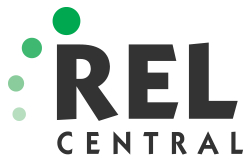As we look back on a hectic spring and look toward a fall filled with uncertainty, there’s no shortage of learning-related issues that academic leaders will need to address this summer.
Over 55 million students in American schools have been impacted by school closures related to COVID-19. Many U.S. schools completed the last quarter of the 2019/20 school year remotely, and how the 2020/21 school year will open is still variable across states.
Educators nationwide are concerned about how extended remote learning will impact student academic achievement levels. Preliminary research on the topic suggests that learning levels will indeed be affected by school closures, while the prospect of a widening national learning gap is also of major concern.
The proliferation of a digital divide in the U.S. is set to exasperate learning gaps while schools are practicing virtual learning. Many students in this country have limited access to the internet, making it difficult for them to keep up with their peers who can get online and access virtual learning materials with greater ease.
At present, many education leaders are implementing remote learning plans to accommodate a continuum of internet access. They are also focused on how they can best use assessments to address and identify COVID-19 learning gaps. Because of instructional time lost during the spring, variability in remote learning success, and the impact of long-term learning losses, educators must effectively identify areas in which students need support and provide that support relatively quickly.
Schools have traditionally implemented assessment and support systems for students but identifying areas of need in the upcoming school year will be more challenging than in past years. For example, educators will be operating without spring 2020 data on students’ performance. Schools often use spring assessment data for fall course placement and identification of areas of need for students.
However, spring assessments were canceled for most schools. As educators anticipate greater academic variability and simultaneously lack spring assessment data, it’s more important than ever that schools develop plans to gather and use student data as they prepare for the 2020/21 school year.
Considerations for the logistical needs to plan these assessments as well as the resources required once data is collected are indeed considerable, which is why getting an early start in the assessment planning process is critical.
REL Central recently hosted a virtual quick chat on this topic featuring presenters Norm Alerta, director of assessment and performance analytics at Cherry Creek School District in Colorado, and Debra Johnson, superintendent of Chamberlain School District in South Dakota. They discussed the various challenges around planning student assessments for the fall and potential strategies for overcoming these obstacles.
“Here in Colorado, there was a statewide pause on testing assessments in the spring, which is something we’ve used extensively in the past,” said Alerta. “Right before school starts back up in the fall, teachers tend to look at the data from these state-administered tests, so not having that information will be a big challenge.”
“The unexpectedness of the pandemic makes the need for assessment fundamentally different than other breaks students get,” said Johnson. “Expected breaks are much easier to plan for and learning losses are generally not as dramatic during things like summer break, where some students actually increase their learning levels thanks to reading programs at libraries and other initiatives like that. These initiatives aren’t as readily available during social distancing, so the issue becomes even bigger. I expect the learning gap will be shown to be significant during this time.”
Alerta and Johnson also discussed prioritizing what subject areas to assess during the REL Central virtual chat; there are several schools of thought regarding this issue. Given the fluidity and ever-changing nature of the pandemic response from public and private entities alike, education leaders’ plans for the fall are difficult to write out in permanent ink.
“Having accessible data is what‘s most important, in my opinion,” said Johnson. “We don’t want to reinvent the wheel and have assessments that students are unfamiliar with, so right now we’re planning on relying upon inventory surveys and other summative assessments that teachers have seen in the past. That being said, it’s important to keep our options open, so ‘hand scoring’ assessments, which our teachers aren’t as familiar with, are still currently being considered as well.”
In a poll conducted during the virtual quick chat, 73% of 252 participants indicated that their plans for the fall leaned towards a hybrid model of education that would include both in-person and remote learning. This result suggests that many education professionals are expecting the unexpected and preparing to have both avenues open to them. With external conditions changing regularly and a lot of unknowns still in play for everyone in the education community, these results are unsurprising.
“Everything can change quickly nowadays, so being adaptable is important,” said Alerta. “Defining what standards are going to be covered and creating pre-assessments for our teachers to get a baseline for where students are at are a focus at the moment, but nothing has been set in stone yet.”
Johnson and Alerta also mentioned that assessing students’ social-emotional capacities, even more than their academic abilities, would be a district priority in the wake of the potentially traumatic hardships during the pandemic. These hardships could include unemployed parents and difficult home environments, among others. They also stated that the pandemic could catalyze a paradigm shift in the philosophy of education. For example, traditional grading systems and other modes of assessment could undergo a permanent overhaul to better represent the changing times we live in.
However schools open in the fall, whether in person or virtually, charting a path to where students need to be in spring 2021 is a common refrain among educators. Focusing on this path and strategically integrating assessments into its map are important first steps along the journey back to normalcy in education.
For more pandemic-related educational resources, be sure to visit the REL Central digital memo page devoted to the topic.





